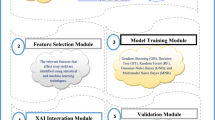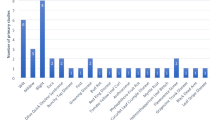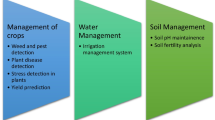Abstract
Organic farming is well-known as a traditional farming method which is responsible in producing the hygienic food product. The organic farm is the integration of agricultural production and system management. Organic farming includes the usage of low pesticides, maintains low nitrate leaching in groundwater as well as surface water, uses animal wastes, and minimizes soil erosion. Crop rotation, natural pest control, and barrier nets are the conventional methods of fertilization techniques. Organic farming makes use of recycling resources comparatively to using chemical fertilizers. A natural compost, animal manure with crop rotation implementation will improve the soil quality. Thus, organic foods are highly hygienic without causing any side effects. A few challenges arise during the implementation of organic farms. These challenges are overcome only via the smart approach and planning and coordination of public and government officials. Organic seeds take a long time to grow, and it is an economically high cost to implement this type of farming. Smart transport and supply of organic products to any location is a bit difficult. The proper selection of seed and selection of land with the suitable climate and soil texture that has to be verified for cultivation is the restrains of organic agriculture. Soil moisture content and sufficient water for the crop are attained through the usage of remote sensing in agricultural farms. The food crisis can be managed via the adaptation of remote sensing. The sensor collects information about the soil, water supply, temperature, and other environmental factors to the control unit. Initially, the infected plant with leaves will be isolated as single image as leaf, and each leaf would be diagnosed with various kernel functions including Cauchy, Invmult, and Laplacian kernel. The proposed system uses image processing to capture the images, and the remote sensing sensor generates the information to the Support Vector Machine which classifies the infected plant or part of the plant from the healthy plant based on the features extracted. The proposed Support Vector Machine (SVM) used a remote sensing technique in detecting the compliance discrepancies in an organic farm.









Similar content being viewed by others
Change history
13 October 2023
This article has been retracted. Please see the Retraction Notice for more detail: https://doi.org/10.1007/s12517-023-11729-y
28 September 2021
An Editorial Expression of Concern to this paper has been published: https://doi.org/10.1007/s12517-021-08470-9
References
Arlot S, Celisse A (2010) A survey of cross-validation procedures for model selection. Statistics surveys 4:40–79
Awokuse TO, Xie R (March 2015) Does agriculture really matter for economic growth in developing countries? Canadian Journal of Agricultural Economics/revue Canadienne Dagroeconomie 63:77–99
Bharwad VS, Dangarwala KJ (2015) Recent research trends of plant disease detection. IJSR 4(12):843–845
Chen H-L et al (2012) Support vector machine-based diagnostic system for breast cancer using swarm intelligence. In: Journal of medical systems 36(4):2505–2519
Deya AK, Manisha Sharmaa M. Meshramb R “Image processing based leaf rot disease, detection of betel vine”, International Conference on Computational Modeling and Security. 748
González Costa JJ, Reigosa MJ, Matías JM, Covelo EF (2017) Soil Cd, Cr, Cu, Ni, Pb and Zn sorption and retention models using SVM: Variable selection and competitive model. Sci Total Environ 593–594:508–522
Jackson RD (1986) Remote sensing of biotic and abiotic plant stress. Annu Rev Phytopathol 24:265–286
Jae H (2005) Min., Young-chan Lee, “Bankruptcy prediction using support vector machine with optimal choice of kernel function parameters”. Expert Syst Appl 28:603–614
Kadu RN, Kangane S, Vikhe S, Pandita R, Inamke V Leaf disease detection using Arm7 and image processing. Int Journal of Engineering Research and Applications, ISSN 5(2):2248–9622
Lin F, Zhang D, Huang Y, Wang X, Chen X Detection of corn and weed species by the combination of spectral, shape and textural features. MDPI 9:1335. https://doi.org/10.3390/su9081335
Lockeretz W (2007) What explains the rise of organic farming? In: Lockeretz W (ed) Organic Farming: An International History, CABI International, Oxford, pp 1–8
Lu W-Z (2005) Wen-Jian Wang, “Potential assessment of the support vector machine method in forecasting ambient air pollutant trends”. Chemosphere 59:693–701
Meemken EM, Qaim M (2018) Organic agriculture, food security, and the environment. Ann Rev Resour Econ 10:39–63
Mohandes MA, Halawani TO (2004) Rehman, S and Ahmed Hussain, A, “Support vector machines for wind speed prediction”. Renew Energy 29:939–947
Mokhtar U, Ali MAS, Hassenian AE Hefny H (2015) “Tomato leaves diseases detection approach based on support vector machine”, 2015 11th International Computer Engineering Conference (ICENCO), Cairo, pp. 246-250
Nock CA, Vogt RJ, Beisner BE (2016) Functional traits. Encyclopedia of Life Science (Els)
Osowski S, Garanty K (2007) Forecasting of daily meteorological pollution using wavelets and support vector machine. Eng Appl Artif Intell 20:745–755
Pal NR, Pal S, Das J, Majumdar K (2003) SOFM-MLP: a hybrid neural network for atmospheric temperature prediction. IEEE Trans Geosci Remote Sens 41(12):2783–2791
Peterson MP, Hunt P, Wei K (2017) Mapping air pollution. J Geovisual Spatial Anal 1:4
Rakshak S, Deshpande RW (2017) Automated irrigation system based on Arduino controller using sensors.// IEEE.
Reganold JP, Wachter JM (2016) Organic agriculture in the twenty-first century. Nat Plants 2:15221
Roy DP, Borak JS, Devadiga S, Wolfe RE, Zheng M, Descloitres J (2002) The MODIS Land product quality assessment approach. Remote Sens Environ 83:62–76
Sabrol H, Satish K (2016) “Tomato plant disease classification in digital images using classification tree”, International Conference on Communication and Signal Processing (ICCSP).
Sachin D, Khirade AB. (2015) Patil, Plant Disease Setection using Image processing//IEEE
Sharada Prasanna Mohanty (2018) David Hughes, Marcel Salathé, Using deep learning for image-based plant disease detection //IEEE
Tigadi B, Sharma B banana plant disease detection and grading using image processing. International Journal of Engineering Science and Computing IJESC 6(6)
Tm P, Pranathi A, SaiAshritha K, Chittaragi NB, Koolagudi SG. (2018) Tomato leaf disease detection using convolutional neural networks, 2018 Eleventh International Conference on Contemporary Computing (IC3)
Willer H; Schlatter B; Trávníˇcek J; Kemper L; Lernoud J (2020) The world of organic agriculture—statistics and emerging trends 2020; Research Institute of Organic Agriculture (FiBL): Frick, Switzerland; IFOAM—Organics International: Bonn, Germany
Yu P-S (2006) Shein-sung Chen., I-Fan Chang, “Support vector regression for real-time flood stage forecasting”. J Hydrol 328:704–716
Zhang HT, Gao MX (2018) The application of support vector machine (SVM) Regression Method in Tunnel Fires. Procedia Eng 211:1004–1011
Author information
Authors and Affiliations
Corresponding author
Ethics declarations
Conflict of interest
The authors declare that they have no conflict of interest.
Additional information
Responsible Editor: Hoshang Kolivand
This article is part of the Topical Collection on Smart agriculture and geo-informatics
This article has been retracted. Please see the retraction notice for more detail: https://doi.org/10.1007/s12517-023-11729-y"
Rights and permissions
Springer Nature or its licensor (e.g. a society or other partner) holds exclusive rights to this article under a publishing agreement with the author(s) or other rightsholder(s); author self-archiving of the accepted manuscript version of this article is solely governed by the terms of such publishing agreement and applicable law.
About this article
Cite this article
S, M., Sharma, A., Singh, S.P. et al. RETRACTED ARTICLE: SVM-based compliance discrepancies detection using remote sensing for organic farms. Arab J Geosci 14, 1334 (2021). https://doi.org/10.1007/s12517-021-07700-4
Received:
Accepted:
Published:
DOI: https://doi.org/10.1007/s12517-021-07700-4




